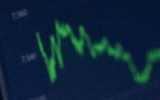
Open-source intelligence is now concerned with capabilities of adaptation to a new strategic environment and its infosphere
It was the best of times, it was the worst of times, it was the age of wisdom, it was the age of foolishness, it was the epoch of belief, it was the epoch of incredulity, it was the season of Light, it was the season of Darkness, it was the spring of hope, it was the winter of despair, we had everything before us, we had nothing before us …”
Charles Dickens’ abovementioned opening lines in his classic “A Tale of Two Cities” masterfully depicts the zeitgeist in the heart of Europe at the time, London and Paris, avalanching en route to the coming French Revolution. Indeed, periods of great changes in long-established informational, political, and economic status quo are tantamount to the best and worst of times. That is definitely the case for two reasons. The first is the change itself, which threatens the winners and gives hope to the losers of the current strategic environment. Second, it does so by not favoring one side over the other, but by altering the main parameters and even the rules of the power play. Natural selection, based on adaptability, favors new settings and new winners.
At present, the craft of intelligence faces both the best and the worst of times in the face of the information age.
- Enter the “Brave New World” of intelligence
With the digital age on the rise, the world of intelligence has been undergoing profound change. Technology and growing interconnectivity remain at the epicenter of this reshuffle. The game and its rules will never be the same again.
The first thing to grasp is the internet, social media and similar platforms, and their roles in harvesting raw intel from battlegrounds.
At present, every single armed conflict has an ‘internet front’ and an information geopolitics dimension, – or the ‘infosphere’ – where the war continues to be fought by other means. This front is also an intelligence arena for gathering data, analyzing information, and manipulating the adversary.
Introduction of smartphones and social media to war zones marked the belle époque of open-source intelligence (OSINT) gathering for analysts. A few years ago, regular personnel and private military contractors connected to the Russian campaign in eastern Ukraine offered, unintentionally, many hints about their geo-locations and combat mission characteristics as well as the delivery of weapons to the proxies on the ground. Likewise, the Syrian Arab Army personnel’s social media posts have long helped us identify arms, units, and key commanders during the Assad forces’ campaigns. Such trends now pertain to nearly all conflicts in every corner of the world.
- Is it top secret anymore?
The devil is in the details. This expression is probably the most accurate representation of modern open-source intelligence efforts. A sniper rifle abandoned in a clash site [1], or a security detail accompanying one of the Russian-backed generals [2] of the Baath regime in Syria, could speak volumes about war-monitoring. What I am talking about here is not hypothetical or futuristic. It is happening right now, as you read this article.
The key question is, can militaries and security agencies swim against the current? Well, sure they are trying. In recent years, for example, the Russian Federation’s armed forces have adopted new regulations prohibiting selfies, the use of social media and the upload of visual material to the internet. But there is a fundamental problem they have to face.
While military forces around the world are struggling to keep their secrets -- while fighting actual wars in the meantime -- they have a tough uphill battle ahead of them. Selfie bans can work for elite units and their highly-trained and well-disciplined elements. Yet, hybrid warfare incorporates a large number of proxies, private military contractors, and paramilitaries. Dictating a digital discipline on these formations would not be easy. In addition, dictating the same rules to conscript formations would be equally daunting. Second, a ban on selfies for only one of the belligerents would not be enough. Unless, say, the Ukrainian anti-terror operations follow suit, the Russian covert campaign in eastern Ukraine can still be exposed.
When assessed cumulatively in clusters, social media and communications materials could offer a great deal of insight for open-source intelligence analysts. In EDAM’s recent work on the Karabakh War [3], for example, my colleague Barış Kırdemir examined the Armenian information operations activity in cross-platform settings by working across several sources, such as Twitter and Telegram. With large data sets, the report was able to map out the Armenian side’s entire information campaign strategy and techniques.
At this point, the trends in drone proliferation and their implications for social media must also be carefully watched. As observed during the Karabakh War, as well as Turkey’s Syrian expeditions to tackle PKK and Daesh terrorism, footage obtained from drones often dominated social media uploads.
Another revolutionary change in OSINT remains in imagery intelligence through commercial satellites. Today, think tanks, private intelligence firms and even journalism benefit from satellite imagery when assessing high-value geopolitical issues such as Iran-harvested militancy close to the Golan Heights [4] or North Korean missile sites.
- A new ocean to sail or sink in
To understand the nature of the emerging power play, one needs to have a quick look at its drivers and primary players. Contemporary open-source intelligence trends are driven not by governments but private intelligence companies, think tanks, and research institutions. Well, that means two things.
First of all, we are to face not only new waves in the ocean of information gathering and analysis, but also new surfers. When defining a nation’s intelligence community or strategic community, one must now count non-governmental parts of it too. And, any nation that lags behind along this path will have to fight, sooner or later, with bows and arrows against gunpowder. Furthermore, a new breed of players brings new interactions to the game. Some nations’ intelligence and foreign and security policy offices have already started outsourcing some of their research activities to emerging OSINT providers and analysts.
Secondly, and essentially, we have new waves and even new rules of nature in the ocean. Think for a second; a few decades ago, imagery intelligence about a possible Iranian missile site in Syria, the Russian surface-to-air missile (SAM) configuration in the vicinity of NATO forces, details of a ballistic missile, or the number and condition a nation’s main battle tank arsenal were all intelligence assets of high-secrecy. Are they now? Well, give it a try yourself through some commercial satellite imagery firm’s services, a military database that you can buy for a few hundred euros or dollars, or a customized think tank work on Russian air defenses’ doctrinal order of battle.
As a result, the nature of secrecy is subject to change. In his 2019 Foreign Policy article, Edward Lucas argued [5] that with the digital age rising, spycraft has become “less esoteric” as intelligence operations have become an integral part of business, finance, and even sports. Lucas strikingly adds that “over-classification and excessive secrecy do not protect countries from their adversaries. Such methods only protect bureaucrats from scrutiny.”
Of course, this does not mean that intelligence has become, or will become, all transparent. Critical functions such as professional human-intelligence (HUMINT) data, specific surveillance of terror cells, or the assets of a nation’s intelligence service operating or sleeping in a foreign country will continue to be subject to high-secrecy. The private intelligence world will not have its hands on these areas, unless we see a fundamental change in the existing world order based on nation states. And for now, such a change is unlikely.
The frontiers where secrecy begins, however, along with the limits of keeping things secret have already started to change. The Syrian Arab Air Force cannot get away with its chemical strikes, nor could Russia when it comes to the presence of the Wagner private military contractors in NATO’s southern flank or when an airliner was downed over Ukraine by a Russian SAM. The new players of intelligence communities can detect, assess, and disseminate findings about these activities without government help.
The digital age is not the end of secrets. It is their mutation into a still unfolding setting. Open-source intelligence is now concerned with capabilities of adaptation to a new strategic environment and its infosphere.
By Dr. Can Kasapoglu
- The writer is the director of Security Defense Research Program at EDAM.
Hello, the comments you share on our site are a valuable resource for other users. Please respect other users and different opinions. Do not use rude, offensive, derogatory, or discriminatory language.
The floor is all yours.








